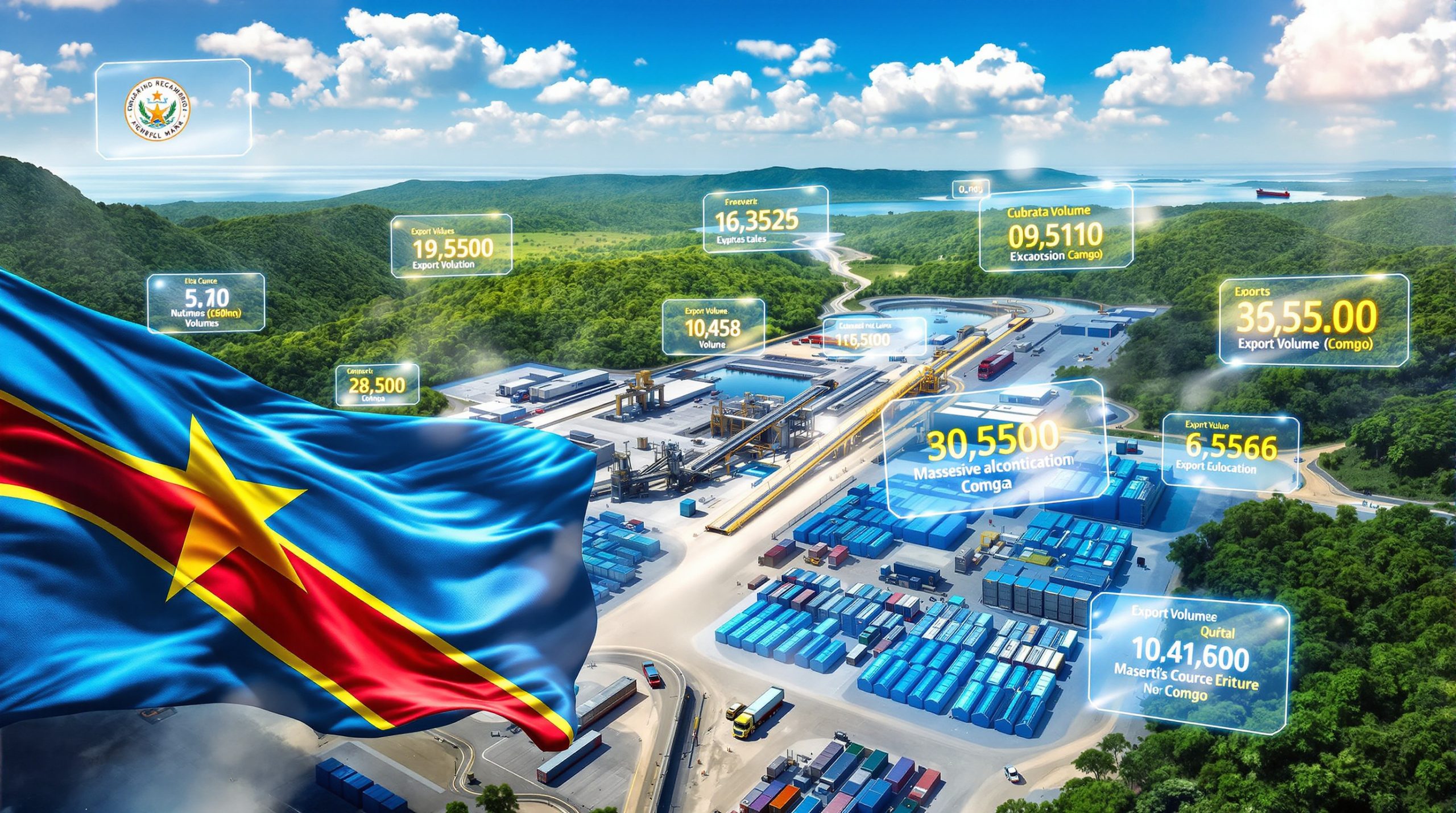The Strategic Response: How Western Nations Counter China's Export Controls
The global critical minerals landscape experienced a seismic shift when China implemented expanded export controls on rare earth elements, adding five additional materials to its restricted list. This strategic move has prompted unprecedented coordination between the European Union and G7 partners regarding EU and US G7 partnership on China rare earth controls, fundamentally reshaping international trade dynamics and supply chain security considerations.
The timing of these restrictions, coinciding with heightened geopolitical tensions, has exposed the vulnerability of Western manufacturing sectors dependent on Chinese-processed materials. With China controlling over 90% of global processed rare earth production, the implications extend far beyond simple trade disputes into the realm of critical minerals security and economic sovereignty.
Understanding China's Expanded Export Control Framework
The latest regulatory measures represent a significant escalation in China's approach to critical mineral governance. The expanded controls now encompass five additional rare earth elements previously available without licensing restrictions, while implementing more stringent documentation requirements for international buyers.
These new regulations specifically target semiconductor industry applications, requiring enhanced scrutiny of end-use applications and customer verification processes. The implementation timeline creates immediate supply chain disruptions while allowing Beijing to maintain plausible deniability regarding economic coercion tactics.
The affected materials play crucial roles across multiple industrial sectors:
- Neodymium and dysprosium for permanent magnet production in electric vehicles
- Terbium and europium for phosphor applications in display technologies
- Yttrium compounds essential for military radar systems and defence electronics
- Lanthanum-based materials critical for petroleum refining catalysts
Industry analysts note that the documentation requirements now mirror those typically reserved for dual-use technologies with military applications, suggesting Beijing's intent to weaponise resource access for geopolitical leverage.
The Scale of Chinese Market Dominance
China's stranglehold on rare earth processing represents one of the most concentrated industrial monopolies in modern economic history. Beyond raw material extraction, Chinese companies control the entire value chain from mining operations through refined product manufacturing.
This vertical integration strategy has created multiple chokepoints within global supply chains:
| Processing Stage | Chinese Market Share | Alternative Capacity |
|---|---|---|
| Raw Ore Extraction | 58% | Moderate |
| Separation & Refining | 92% | Limited |
| Alloy Production | 94% | Minimal |
| Magnet Manufacturing | 89% | Emerging |
The geographic concentration of processing facilities within China creates additional vulnerabilities. Over 70% of rare earth refining capacity operates within a 500-kilometre radius in Inner Mongolia and Shandong provinces, making the entire global supply chain susceptible to localised disruptions.
Technology transfer requirements have historically prevented Western companies from developing competitive processing capabilities. Chinese regulations mandate joint ventures and intellectual property sharing for market access, effectively subsidising domestic industry development while constraining international competitors.
EU-G7 Coordination Mechanisms Take Shape
European Trade Commissioner Maroš Šefčovič characterised China's restrictions as fundamentally unjustified, establishing the diplomatic framework for coordinated Western response measures. The European Union's trade ministers, convening in Denmark, formally designated these controls as a matter of "critical concern" requiring unified action.
The coordination framework encompasses multiple diplomatic and economic tools:
- Joint pressure tactics through synchronised trade negotiations
- Shared intelligence on supply chain vulnerabilities and alternative sources
- Coordinated stockpiling strategies to reduce short-term disruption risks
- Technology sharing agreements for processing capability development
Danish Foreign Minister Lars Rasmussen emphasised the necessity of transatlantic unity, noting that fragmented responses would prove ineffective against China's coordinated approach. The minister specifically highlighted common interests between European and American industrial sectors in maintaining stable access to critical materials.
Furthermore, the European Union has been working with G7 partners to develop comprehensive response strategies that address both immediate supply concerns and long-term strategic vulnerabilities.
Strategic Supply Chain Diversification Initiatives
Western nations are accelerating efforts to reduce dependency through geographically distributed extraction and processing capabilities. These initiatives focus on developing mining projects in politically stable jurisdictions while building processing infrastructure outside Chinese control.
Australian Partnership Development
Australia's strategic reserve development offers the most immediate diversification potential, with established mining operations and government support for expanded processing capabilities. Joint ventures between Australian producers and Western technology companies are creating integrated supply chains independent of Chinese infrastructure.
North American Resource Development
The United States and Canada are revitalising domestic rare earth extraction while addressing environmental concerns that previously hindered development. Modern extraction techniques and stricter environmental standards are enabling politically acceptable mining operations in previously restricted areas.
Consequently, recent developments include a significant Trump executive order that aims to strengthen domestic critical mineral production capabilities.
African Mineral Extraction Collaborations
Several African nations possess substantial rare earth deposits requiring foreign investment and technical expertise for development. Partnership agreements focus on sustainable extraction practices while ensuring stable long-term supply arrangements.
The infrastructure development timeline presents significant challenges:
- Mining operations: 5-7 years from exploration to production
- Processing facilities: 3-5 years for construction and commissioning
- Technology transfer: 2-3 years for knowledge acquisition and adaptation
- Workforce development: 1-2 years for specialised training programmes
Pentagon's Billion-Dollar Stockpiling Strategy
The United States Department of Defense has committed $1 billion toward critical mineral stockpiling, representing the largest strategic reserve expansion since the Cold War era. This initiative prioritises materials essential for defence applications while coordinating with allied nations to maximise collective security.
The strategic stockpiling framework addresses multiple objectives:
National Security Priorities
- Ensuring defence contractor access during supply disruptions
- Maintaining military equipment production capabilities
- Supporting critical infrastructure resilience during crises
Economic Stabilisation Functions
- Providing market buffers during price volatility periods
- Supporting domestic industry development through guaranteed demand
- Reducing speculative trading impacts on essential materials
Allied Coordination Benefits
- Shared storage and distribution infrastructure costs
- Coordinated release mechanisms during global shortages
- Standardised quality specifications across partner nations
The Pentagon's approach emphasises rapid deployment capabilities, with strategic reserves positioned near major manufacturing centres and transportation hubs to minimise distribution delays during crisis scenarios.
China's Diplomatic Justification Strategy
Beijing's official communications characterise the expanded export controls as routine regulatory adjustments consistent with international trade norms. Chinese officials emphasise national security considerations while maintaining that approved exports serve peaceful commercial applications.
The diplomatic messaging strategy encompasses several key elements:
- Regulatory legitimacy claims emphasising compliance with World Trade Organisation frameworks
- National security justifications paralleling Western restrictions on technology transfers
- Peaceful use assurances for materials approved through licensing processes
- Transparency commitments regarding licensing criteria and approval timelines
Chinese trade representatives have simultaneously called for rational and pragmatic responses from European partners, suggesting potential negotiation flexibility while maintaining core policy positions. This dual messaging approach allows Beijing to project reasonableness while preserving strategic leverage.
However, Reuters reported on the EU's efforts to seek US alliance to counter these restrictions, highlighting the growing international concern over China's market dominance.
Economic Impact Assessment Across Industries
The export restrictions create cascading effects throughout global manufacturing supply chains, with different sectors experiencing varying degrees of disruption based on their rare earth intensity and inventory management practices.
Automotive Sector Vulnerabilities
Electric vehicle manufacturers face the most immediate challenges due to their heavy reliance on rare earth permanent magnets. Neodymium shortages could delay production of electric motors, while dysprosium restrictions impact high-performance magnet applications in premium vehicles.
Semiconductor Industry Impacts
The targeted nature of controls affecting semiconductor applications creates specific bottlenecks in chip manufacturing. Yttrium compounds essential for semiconductor etching processes and europium-based phosphors for display technologies face extended approval processes.
Defence Manufacturing Concerns
Military contractors experience the highest priority disruption risks due to rare earth materials' critical roles in radar systems, guided munitions, and electronic warfare equipment. The specialised nature of defence applications makes alternative materials substitution particularly challenging.
Renewable Energy Infrastructure
Wind turbine manufacturers requiring large quantities of rare earth permanent magnets face extended lead times and potential project delays. The scale of materials required for offshore wind installations makes stockpiling strategies less viable than for other sectors.
In addition, the impact on green transition materials has become a significant concern for policymakers focused on climate objectives.
Western Counter-Strategy Effectiveness Analysis
The coordinated Western response combines diplomatic pressure mechanisms with market-based solutions to address both immediate disruptions and long-term supply security concerns regarding EU and US G7 partnership on China rare earth controls.
Diplomatic Leverage Tools
World Trade Organisation dispute resolution processes provide formal mechanisms for challenging export restrictions, though resolution timelines extend beyond immediate supply needs. Bilateral trade negotiations offer more rapid response potential but require significant economic incentives.
Market-Based Solution Development
Price premium incentives for alternative suppliers have successfully attracted investment in non-Chinese production capacity, though scaling challenges persist. Technology transfer agreements with allied nations accelerate capability development while sharing associated costs and risks.
Private Sector Partnership Facilitation
Government-backed loan guarantees and tax incentives encourage private sector investment in supply chain diversification projects. Public-private partnerships reduce individual company risk exposure while maintaining competitive market dynamics.
The effectiveness of these strategies depends heavily on sustained political commitment across multiple election cycles, as infrastructure development timelines exceed typical government planning horizons.
Timeline Challenges for Supply Independence
Achieving meaningful supply chain diversification requires addressing multiple sequential development phases, each presenting distinct challenges and resource requirements.
Infrastructure Development Requirements
New mining operations require comprehensive environmental impact assessments, community engagement processes, and regulatory approvals before construction can commence. Processing facility development faces additional challenges related to specialised equipment procurement and technical expertise acquisition.
Investment Mobilisation Complexities
Large-scale mining and processing projects require substantial capital commitments with extended payback periods, creating challenges in attracting private investment. Government support mechanisms must balance public interest objectives with commercial viability requirements.
Regulatory Harmonisation Needs
International partnership success depends on compatible regulatory frameworks across participating nations. Differences in environmental standards, labour regulations, and trade policies create coordination challenges requiring diplomatic resolution.
Technical Expertise Development
Rare earth processing requires specialised knowledge currently concentrated within Chinese industrial sectors. Technology transfer and workforce development programmes must overcome significant knowledge gaps while protecting proprietary processes.
Long-Term Geopolitical Implications
The rare earth export control dispute represents a broader shift toward resource nationalism and economic security prioritisation in international relations. This trend extends beyond critical minerals to encompass energy resources, agricultural products, and advanced technologies.
Trading Bloc Fragmentation
The coordinated Western response accelerates the formation of aligned trading relationships based on security considerations rather than pure economic efficiency. This fragmentation creates parallel supply chains serving different geopolitical spheres.
Strategic Alliance Evolution
Traditional military alliances are expanding to encompass economic security cooperation, including resource sharing agreements and joint infrastructure development. These enhanced partnerships create new obligations and coordination requirements among allied nations.
Technology Competition Intensification
Rare earth export controls represent one component of broader technological competition between China and Western nations. This competition encompasses semiconductor manufacturing, artificial intelligence development, and renewable energy technologies.
Moreover, recent developments such as the rare earth breakthrough in processing technologies could potentially reshape market dynamics in favour of Western nations.
Economic Interdependence Reduction
Both Chinese and Western policies increasingly prioritise supply chain security over cost optimisation, leading to reduced economic interdependence and potentially higher consumer costs across multiple sectors.
The EU and US G7 partnership on China rare earth controls represents a fundamental paradigm shift in international trade relationships. As nations prioritise strategic autonomy over economic efficiency, the global economy moves toward a more fragmented but potentially more resilient structure.
Disclaimer: This analysis is based on publicly available information and industry reports. Geopolitical situations and trade policies are subject to rapid change. Investors and industry participants should conduct their own research and consult with qualified professionals before making strategic decisions based on supply chain considerations.
Ready to Invest in the Next Critical Minerals Discovery?
Discovery Alert's proprietary Discovery IQ model delivers real-time notifications on significant ASX mineral discoveries, helping investors identify actionable opportunities ahead of market movements. Explore how historic mineral discoveries have generated substantial returns by visiting Discovery Alert's discoveries page, then begin your 30-day free trial today to secure your competitive edge in the evolving critical minerals market.




